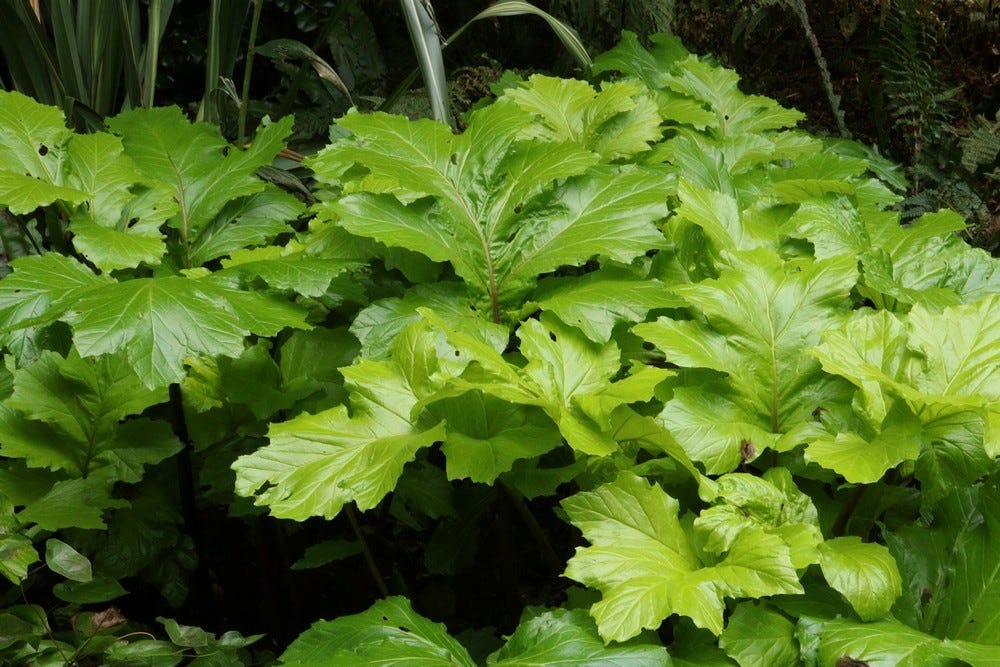We all have our tastes; this is good. Tastes are nothing more or less than personal opinions, although some feel the need to follow the opinions of others than is possibly wise. Blindly following the tastes of others is disappointing; I love nothing more than to hear a gardener stand up for a plant they personally love but others turn their noses at. Be defiant, I say!
I'm not hugely keen on golden foliage. It's not so much the colour itself that irks me but how easy it is to overdo it in the wrong setting. Yellow is bold and exciting but, like seasoning in food, it's easy to get carried away and end up overdoing it. Careful dosing of such a powerful ingredient, in cooking and in gardening, has far greater impact. Less is more, and all that.
I could tell you for sure, however, that I didn't like Acanthus mollis 'Hollard's Gold'. Why would I? Acanthus mollis is a tough beast at the best of times, a plant that has its uses in tricky places but is far too thuggish to be allowed in the polite border. Why anyone would want a version with yellow leaves is beyond comprehension.
Yet it pays to have an open mind in gardening, especially when it comes to plants and colours. On a recent visit to Abbotsbury Subtropical Garden in Dorset, along the beautiful south coast of England, I was absolutely bowled over by the careful and precise use of this bold plant.
Much as I might moan at Acanthus mollis it does have a great leaf, and that leaf in a gentle gold stands out very well in the dark undergrowth of a densely planted garden. Acanthus are architectural plants anyway, and using a bland groundcover in a garden brimming with bold foliage would be ineffective. If you're going hard on structural planting you need all the elements to work together.
“The foliage is chartreuse- not bright enough to brag on its beauty but yellow enough to think about the need for fertility.”
Alan Armitage
Finding out anything meaningful about the origins of Acanthus 'Hollard's Gold' has proven challenging. Tantalisingly it has the synonym 'Fielding's Gold' which implies there was a bit of uncertainty when the plant first appeared. This sort of confusion tends to creep in when a plant is shared among enthusiasts for a while before an official name is given to it; a plant proves worthwhile and someone names it, only for the original raiser to also put their name on it too. Even pinning down a date of introduction is difficult, and very few of my gardening books mention this cultivar. In the fourth edition of Herbaceous Perennial Plants by Alan Armitage this cultivar is mentioned as being introduced to the USA in 1994, and it's not a huge leap to suggest that Acanthus 'Hollard's Gold' was in cultivation in the UK from the late 1980s. Interestingly Armitage suggests that 'Fielding's Gold' is the correct name, and that the plant came from Fielding, New Zealand. However in the UK it's 'Hollard's Gold' that is considered, rightly or wrongly, to be correct. I'm sure taxomists will let us know at some point.
Acanthus 'Hollard's Gold' is not quite as vigorous as straight Acanthus mollis, and there are occasional suggestions that it might not be quite frost hardy when it's young. This is almost certainly going to benefit the gardener overall, but it does also mean that the golden version of the species needs a little more nurturing. Acanthus mollis itself will grow anywhere pretty much- providing soil seems a mere formality- but 'Hollard's Gold' does need reasonable conditions to thrive. Good soil and light shade suit it well.
This plant will still be a little too boisterous to be allowed alongside delicate woodland plants. Like the recently featured Trachystemon orientalis, this is a robust plant to be grown with other robust plants in larger spaces where such planting is appropriate. The only thing I'm a little sceptical about with Acanthus 'Hollard's Gold' is the flowering; I cannot imagine for a moment that typical Acanthus mollis flowers will in any way enhance the look of this plant. I advise judicious nibbling with the secateurs as the flower stems appear... this is most definitely a foliage plant!







